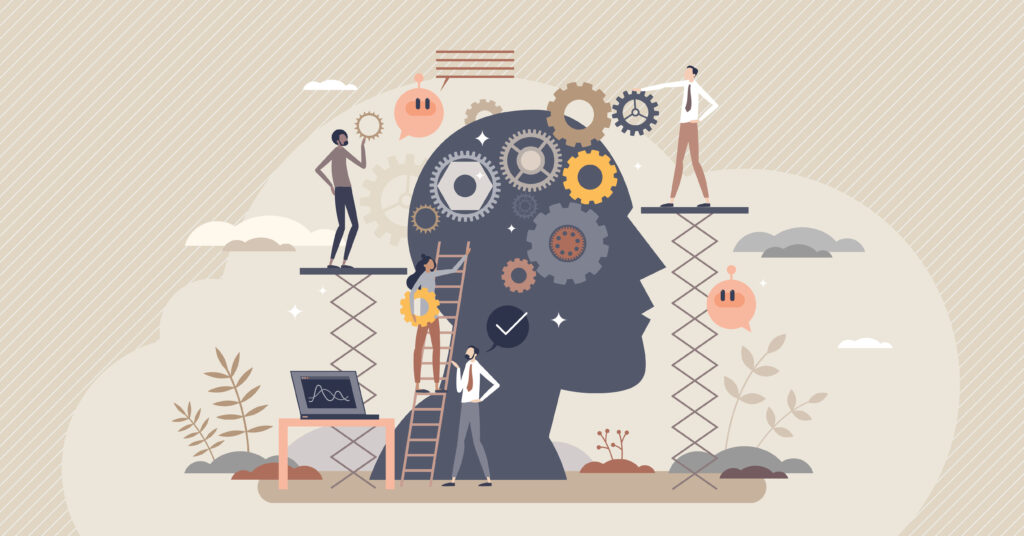A high-value care practice for low back pain
The results of a new chronic low back pain therapy’s trial have shown that patients improved by more than 50 per cent.
The results of the trial of a new therapy approach, i.e., Cognitive Functional Therapy (CFT), were published last week on The Lancet medical journal.
The RESTORE trial, led by three universities in Australia and the UK and conducted with nearly 500 people over the age of 18 with chronic lower back pain, involved participants to be trained by physiotherapists to change old habits in the lower back pain relief and showed how “breaking old habits” could be the key in treating low back pain through CFT.
The trial consisted of seven treatment sessions over 3 months, with the addition of a booster session at 6 months (1 hour initial, 30 to 45 minutes follow-ups). The sessions were delivered in 20 primary care centres in 2 cities by 18 physiotherapists, who were trained to competency in CFT.

The therapy reduced pain and improved function, and researchers found the benefits lasted 12 months.
Professor Mark Hancock, Sydney lead investigator from Macquarie University, said in terms of disability, the patients improved by more than 50 per cent.
“So, it’s a large improvement,” Hancock said.
“We are really trying to find a way to roll this treatment out and train up many more therapists.”
Chronic back pain patient Leah Fitzgerald said her pain had lessened since doing the trial.
Another sufferer, Volker Rehbocks, said the trial allowed her to once again do many of her favourite activities.
Peter O’Sullivan, developer of CFT from Curtin School of Allied Health, said there were many people in the community with back pain who had given up on care: “We give people these labels which makes them think they’re damaged and they’re advised to protect their back, which sets them up for failure.”
According to the findings of the RESTORE trial, CFT interventions resulted in large and sustained reductions in pain-related disability and pain intensity with substantial costs savings.
Leading cause of disability in the world
Low back pain is the leading cause of disability, work loss, and early retirement worldwide. And it is especially damning for security professionals since it represents the number one risk of prolonged standing, followed by leg pain and discomfort, fatigue, and varicose veins, according to research on occupational ergonomics.
Low back pain is among the main causes for the increase in the rate of absenteeism as well. It affects almost everyone at some point from adolescence to later life and 20-30% of people who develop low back pain go onto develop chronic (persistent) low back pain. Chronic low back pain is defined as pain that lasts more than 3 months.

Peter Kent, associate professor at Curtin School of Allied Health and RESTORE primary investigator, said: “In terms of its economic impact at a societal level, chronic pain is more expensive than diabetes and cancer combined, mostly due to a loss of participation in work and to ongoing care-seeking.”
The disability burden caused by low back pain is projected to increase in coming decades, according to research.
Living a life on hold with chronic low back pain
Dr Robert Schutze, clinical psychologist and Perth Site Manager, says: “For many people, low back pain profoundly disrupts their lives. It interferes with everyday activities like going to work, exercising, caring for loved ones, doing house work, even socialising… the list goes on.
“So, this reduced activity means often a decline in fitness, strength, in general health. And that can exacerbate back pain, or at least, maintain it.
“And unfortunately, we know that mental health frequently worsens as well. A lot of people with chronic back pain experience depression, anxiety and other psychological problems, which makes sense if you think that participating less in daily activities, in the things usually give their lives meaning and purpose.
“Then often relationships suffer. There is increased financial stress when people are working less and paying for increased healthcare.
“And so, this lived experience of chronic low back pain is often described as like living a life on hold, a life that is disconnected from one’s self, world and future.”
“I lived in a state of fear that things would get worse”
A CFT patient commented on her condition: “I was locked in. I avoided multiple activities that would have any chance of, any risk of my body being in an unstable state, I would avoid. That would even involve pushing a shopping trolley.
“I avoided activities with my kids because I lived in a state of fear that one foul move would just have these disastrous effects. I’ve been through so much I didn’t want to risk being through anything else.
“So, I lived in a state of fear that things would get worse and I lived in a state of restriction, personally and with my family as well.”
The vicious circle of pain, medication and common interventions
She went on to say that a lot of recommendations for her low back pain included pain relieving medication and physiotherapies: “At the time, the most common physio procedure was that little side adjustment and a hot-pack. And I would go in, I’d have that adjustment, and by the time I’d driven home in the car I was back in pain. It was just a circle.
“I just got used to living with pain. It became a part of my identity. Being told something like “you’ll be in a wheelchair when you’re forty” when, at the time, I was in my twenties, was terrifying.”

She said there were only two options in life for her: Taking medication with loads of awful side effects or being in a wheelchair.
“I felt very disempowered, very confused and very scared. And when you’re already in chronic pain, it just starts becoming a bit of a downward spiral.”
Traditional treatments for back pain, such as massage, spinal manipulation, medication, injections and surgery only result in small to moderate effects that are often short lasting and do not change the trajectory of low back pain in most people. Importantly, some of these treatments can produce significant and harmful side effects.
Professor Mark Hancock, Sydney lead investigator, said: “The care received by people with low back pain is highly variable and many people receive interventions that are not recommended in international guidelines.
“Unfortunately, even those interventions that are widely recommended such as exercise and psychological therapies produce relatively small and short-lasting effects.”
“This is not, however, entirely surprising, given that most current interventions fail to address the wide range of factors that we now know that contribute to chronic low back pain, things such as unhelpful beliefs about pain, physical, social and life-style factors,” Hancock added.
CFT: Making sense of the pain
Over recent years there has been a shift to a broader understanding about back pain. This new understanding describes back pain as a result of a complex interaction between a range of biological, psychological, social, and cultural factors. This interaction is unique for each person.

Comprehensively addressing these factors demands a different approach to care, according to CFT clinician-researchers. Once serious pathology is excluded, best care guidelines call for clinicians to screen, explore and target the biopsychosocial barriers to recovery in people with low back pain. They also call for care to be person-centred, with the need to educate people about their pain and promote effective self-management of their condition.
To date there is an evidence-practice gap, where many clinicians report they don’t have the skills or confidence to deliver this type of care.
To overcome this gap, clinician-researchers developed a person-centred approach to manage back pain – Cognitive Functional Therapy, which is a behavioural intervention for people with chronic low back pain, putting into practice the universal recommendations for a biopsychosocial approach to care.

Prof. Peter O’Sullivan, developer of Cognitive Functional Therapy and trainer, said: “Cognitive Functional Therapy is a person-centred approach that is aligned to best care principles. It explores the patient’s beliefs, emotions and behavioural responses to pain, and then takes the person on a journey.
“This journey first explores the person’s understanding of their pain. It helps them to reconceptualise their pain as not so much about damage, but as the body’s responses to protect themselves.
“It helps them to find new ways of responding to their pain in terms of moving and relaxing and having new control of their body to built confidence in their body to go back to the things in life that they value.
“It also helps to address other things, such as lifestyle factors, to re-engage in physical activity, to manage their sleep, and to get back into social activities and things that they love to do.
“It gives them a sense of autonomy, to have control over their body and their health so that they can independently manage their own health concerns.”
The findings of the RESTORE trial were welcomed in the physiotherapy community.
Monty Lyman, a doctor, author of The Painful Truth, and research fellow at Oxford, shared the published study on Twitter and commented: “Low back pain is the leading cause of disability worldwide. When I wrote The Painful Truth two years ago, I expressed hope for a safe, effective and holistic treatment targeting pain-related thoughts, emotions and behaviours… …now we’re starting to see the evidence come in!”
Kyle Sheldrick, a medical doctor and researcher, said: “For people with back pain (especially those who have had it a long time and aren’t getting better) this is a safe treatment that led to substantial improvement. Solid trial, well designed, lots of patients, appropriately analysed, showed a substantial and meaningful improvement.”
Shona Houston, physio and Clinical Director at West End Physio, Glasgow, UK, commented: “Change within chronic pain situations has traditionally been hard. This impressive study backs up what we have seen in clinic. Often big shifts in really stuck patients- back to living their lives! Looking forward to seeing the next steps!”
Umberto Crainich, physiotherapist OMPT and lecturer at University of Udine, said: “A huge trial for a huge hope of changing about the management of people with LBP. As The Lancet said “A radical shift of life sciences funding priorities, away from the biomedical bubble and towards the social, behavioural, and environmental determinants of health, is now needed.”
More information about the RESTORE trial and CFT may be found at https://www.restorebackpain.com.
For security industry professionals and medics
SIU – Security Rehabilitation Centre https://www.the-siu.org.uk
For serving and retired police officers
Flint House – Police Rehabilitation Centre https://www.flinthouse.co.uk
The Police Treatment Centres https://www.thepolicetreatmentcentres.org










